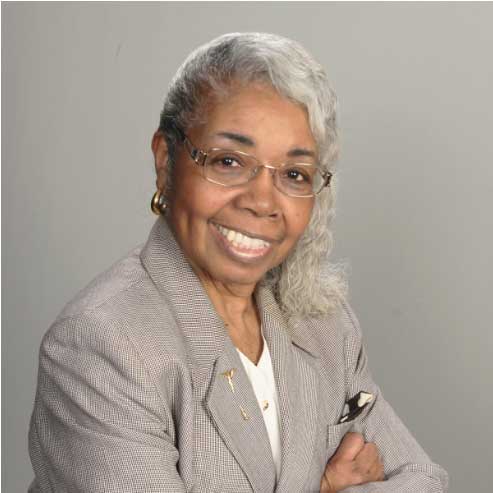
Dr. Valerie L. Thomas
Dr. Valerie L. Thomas NASA Mathematician (Retired): B.S., Physics, Morgan State University; M.S., Engineering Administration, George Washington University; Certificate, Middle Management Development, Simmons College Graduate School of Management; Ph.D., Engineering, Monmouth University (honorary); Ed.D., Educational Leadership (Educational Technology focus), University of Delaware. She worked at NASA for thirty one years.
During Dr. Thomas’ National Aeronautics and Space Administration (NASA)/Goddard Space Flight Center (GSFC) career, she thrived on challenging projects. She developed real-time computer data systems to support satellite operations control centers. She managed the development of Landsat image processing data systems (for at least three Landsat satellites), becoming known internationally as an expert contact for Landsat data products. She headed a GSFC team of approximately 50 people for the Large Area Crop Inventory Experiment (LACIE), a joint effort with NASA’s Johnson Space Center (JSC) and Marshall Space Flight Center (MSFC), the National Oceanic and Atmospheric Administration (NOAA), and the U.S. Department of Agriculture (USDA). LACIE demonstrated the feasibility of using space technology to automate the process of predicting wheat yield on a worldwide basis. She spent a year working at NASA Headquarters as the Assistant Program Manager for Landsat/Nimbus. After returning to GSFC, she served as the Operations Manager for the early access system (nicknamed Scrounge) for Landsat-7’s then new Thematic Mapper sensor. When she joined the NASA Space Science Data Center (NSSDC), she was the NSSDC Computer Facility Manager responsible for a major consolidation and reconfiguration of two previously independent computer facilities and infused it with new technology. She then served as the Space Physics Analysis Network (SPAN) Project Manager, during a period when SPAN underwent a major reconfiguration and grew from a scientific network with about 100 computer nodes to one directly connecting about 2,700 computer nodes worldwide. SPAN was NASA’s first wide area network and became a major part of NASA’s science networking and today’s Internet. In 1990, she then lead an effort to create and implement the Minority University – Space Interdisciplinary Network (MU-SPIN), which enabled minority institutions (Historical Black Colleges and Universities, Hispanic Serving Institutions, and Tribal Colleges) to be electically networked and to facilitate opportunities to prepare their students and staff to participate in NASA-related interdisciplinary research.

